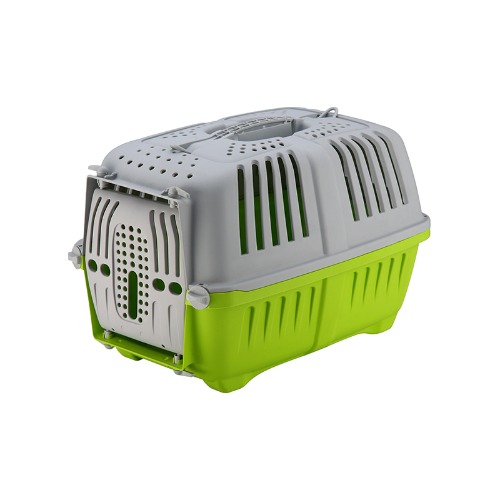When preparing for a journey that involves your pet, choosing the right Pet Carrying Cage (or Portable Aircraft Cage when flying) is only the initial step. How you use that cage—and how you prepare both the pet and the cage—makes a huge difference in ensuring a smooth, low-stress trip.
1. Acclimate Your Pet Early
Introduce the Cage Gradually
Start by placing the empty Pet Carrying Cage in your home weeks (or days) ahead of travel. Let your pet explore it at their own pace. Use rewards — treats, praise — to create positive associations. Over time, you can encourage short intervals of stay inside the cage, gradually increasing duration. This method aligns with crate training principles widely recommended by animal behaviorists.
Use Familiar Items Inside
Place their favorite blanket, a worn shirt of yours (with your scent), or a familiar toy inside the cage. That familiarity can reduce anxiety when the cage becomes their temporary “home away from home.”

2. Choose the Right Cage Setup
Ventilation & Visibility
Ensure that your cage—especially a Portable Aircraft Cage used for flying—has adequate ventilation. Airlines often require ventilation openings on at least three sides (or four sides for international transport). Mesh panels or vents allow airflow and let your pet see out, which can reduce stress.
Secure, Sturdy Construction
Cages must be escape-proof, with solid latches that can’t open accidentally. Airlines typically reject cages with snap closures unless reinforced with bolts or screws. Also, wheels (if present) must be removed or disabled before checking the cage in.
Leak-Proof Interior & Padding
Use absorbent pads or liners on the floor to manage any accidents. But these should not be bulky—excess bedding can interfere with airflow or cage closure.
Food/Water Access & Labeling
Attach food and water dishes inside the cage door (i.e., accessible without opening the cage). Clearly label the cage with “Live Animal” stickers and orientation arrows. Also, include a pouch with feeding/watering schedule and contact information.
3. Timing & Feeding Strategy
Feeding Before Travel
Minimize the risk of nausea by feeding your pet a light meal several hours before departure. Avoid feeding immediately before travel. Some guides recommend giving water up to a certain cutoff time but not excess food right before.
Walk & Rest Breaks (for land travel)
If you're traveling by car or road, allow for breaks so your pet can relieve itself, stretch, and hydrate.
Check-in Timing for Flights
Arrive early, but not excessively early, to reduce the time your pet spends in a busy, chaotic environment. Coordinate with the airline’s deadlines so the cage spends minimal idle time.
4. Secure the Cage During Transport
In a Car or Ground Vehicle
Place the Pet Carrying Cage on the floor behind a seat or secure it using a seatbelt path (if the cage has such a notch). This prevents sliding or tipping during sudden braking.
In an Aircraft
For a Portable Aircraft Cage, ensure it’s placed upright and stable in cargo or under-seat (if cabin transport). Avoid tipping, shifting, or stacking heavy luggage on top.
5. Monitor & Calm Your Pet
Covering the Cage (Partially)
In cases where your pet gets spooked by sights around them, you can drape a lightweight blanket partially over one side of the cage. But never fully cover it, as that risks suffocating your pet.
Calm, Gentle Interaction
Talk to your pet softly before and during boarding, if allowed. Avoid forcing them in. Keep movement around the cage calm and slow. Your presence can reassure them.


 English
English Español
Español Deutsch
Deutsch

